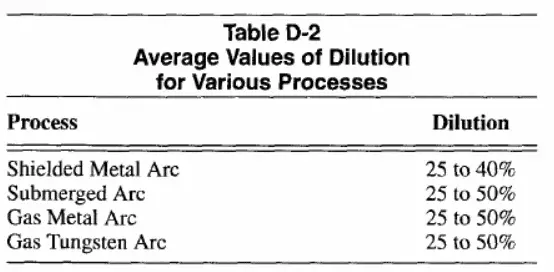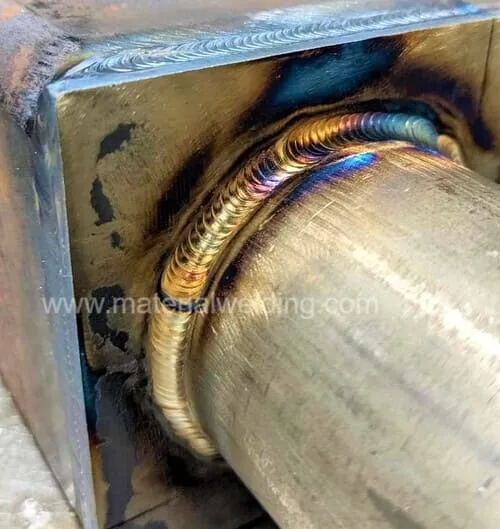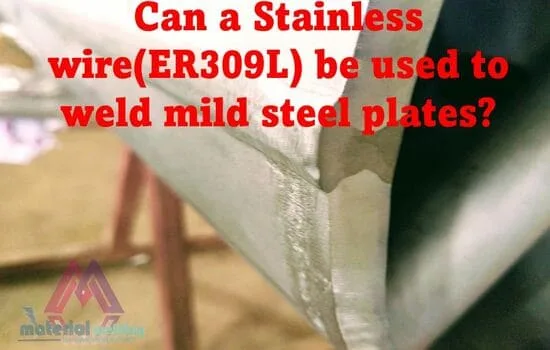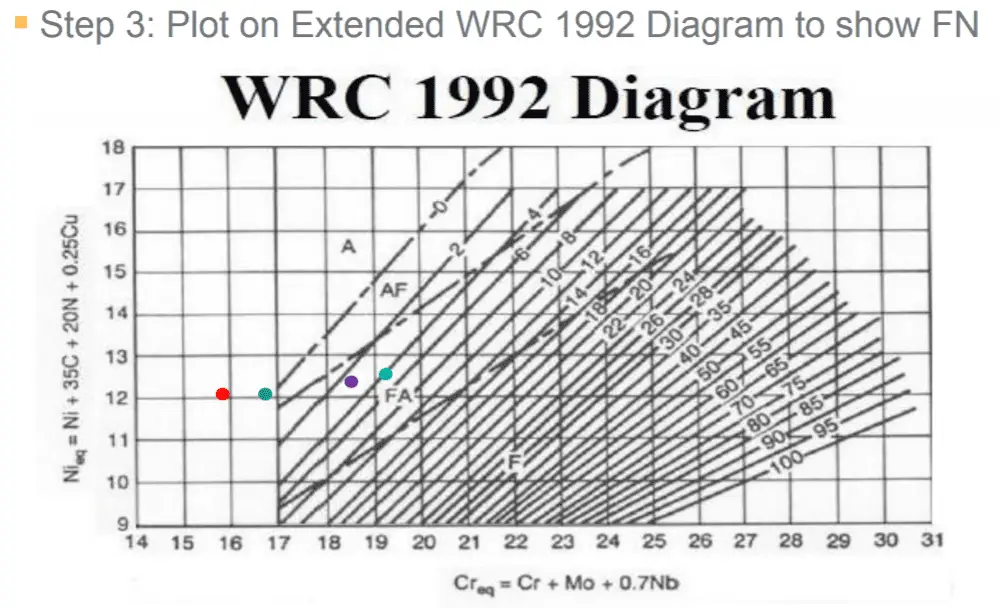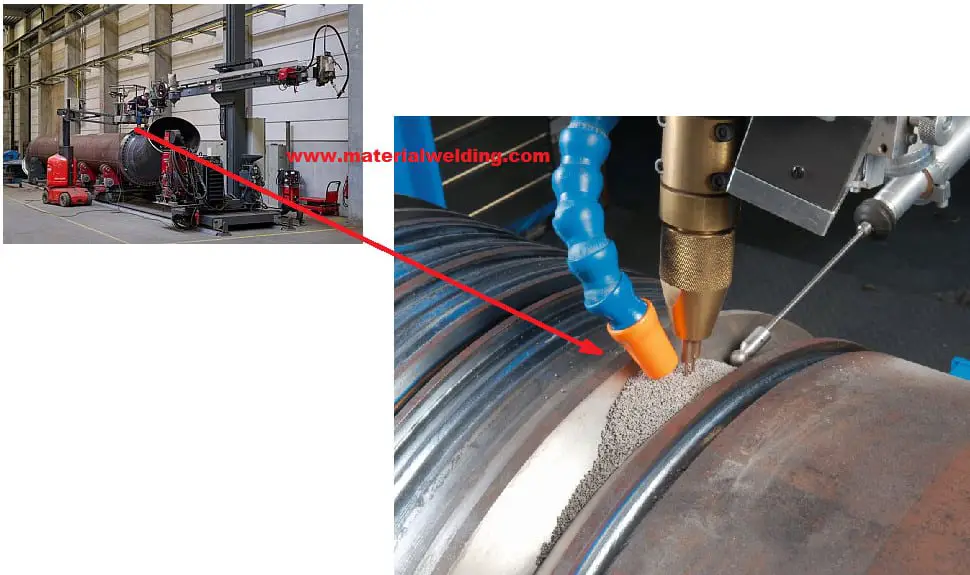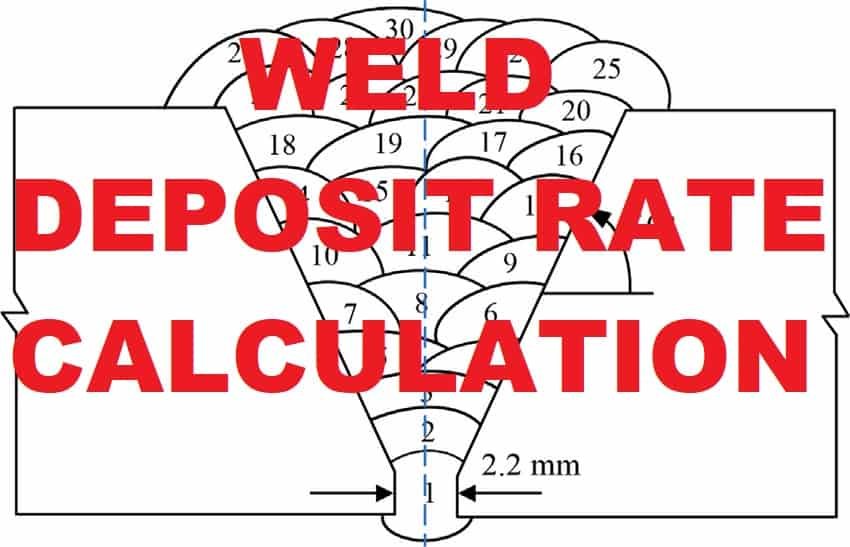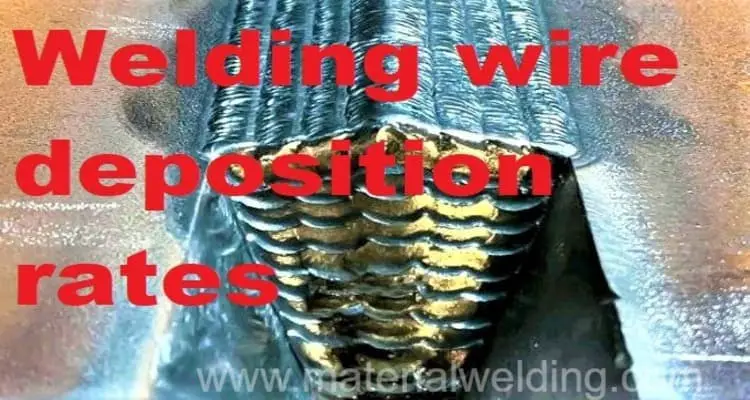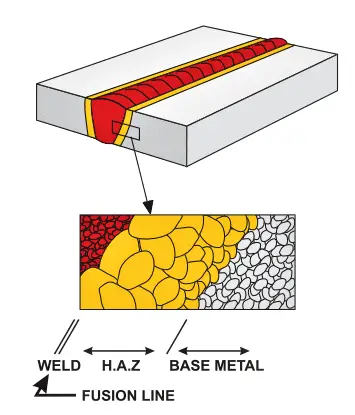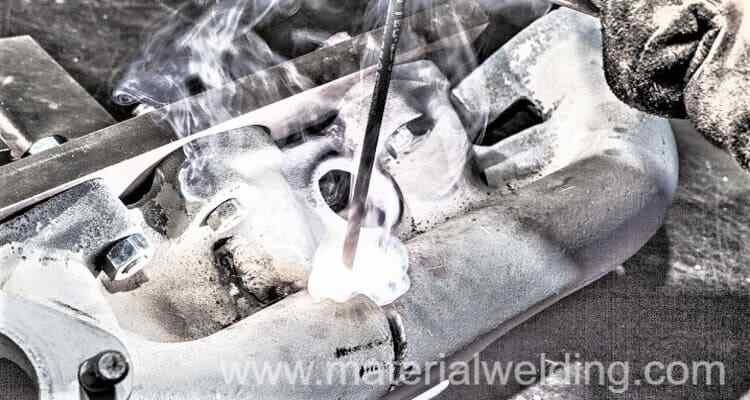Understand the importance of dilution in achieving optimal weld quality. Learn how factors such as welding parameters, base metal composition, and filler metal selection influence dilution. Explore techniques to calculate and control dilution for precise weld outcomes.
Dilution rate in welding is an important factor to determine the resultant weld deposit microstructure, its unique properties, phase balance and weld integrity.
Dilution rate in welding and dilution calculation in welding
During fusion welding, each dissimilar base metal and filler metal (if used) are melted together and combined in the weld pool. On solidification, the weld metal will be either a single-phase or a mixture of two or more phases.
A phase can be a solid solution, such as that occurring between nickel and copper, or it may be an intermetallic compound (CuAl2), or other compounds such as carbides (Fe3C and TiC).
So, Dilution Rate is the resulted change in weld metal chemistry due to the mixing of the filler wire & base metal after fusion to create the weld deposit. When two metals are joined the above considerations cover the relative proportion of each.
There is also the need to consider the effect of the consumable. When an electrode is used to weld a material, the molten metal of the electrode melts a proportion of the parent metal.
This leads to two major effects as:
(a) Dilution of the molten weld metal gives a weld bead chemistry which is composed of the deposited metal diluted with parent metal (usually 10 to 30%).
(b) The material adjacent to the weld pool which is taken above the upper critical temperature is known as the heat-affected zone (HAZ). This HAZ is in effect subject to heat-treatment and the final hardness of this area depends on its chemical composition and the cooling rate.
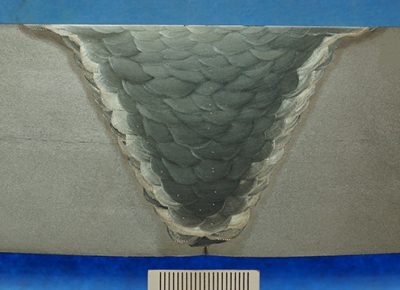
Factors affecting the Dilution Rate in Welding
The degree of Dilution Rate depends on the following factors:
- The type of welding joint (groove, fillet or weld overlay) and joint edge preparation (square or V groove);
- The welding process (e.g. SMAW, TIG or MIG/MAG), process parameters (including operating current mode, shielding gases), and technique (electrode angle, welding position) used; and
- the mismatch between the filler and base metal (Similar or dissimilar metallurgy, overmatch filler).
Dilution is the result of fusion occurring between Base Materials + Filler Metal in welding processes with filler. In autogenous welding processes, it is the fusion between the joining base metals only.
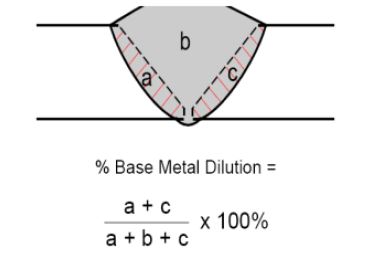
- Selected Joint design & welding Processes
Different welding processes use varying levels of thermal energy and hence each welding process’s resultant dilution rate is different.
In the below picture, you will notice that welding processes (Stick (SMAW)/ GTAW) use lower welding current & voltage- resultant dilution is only 20 to 40%) while the high energy process (e.g. SAW)- resultant dilution can be up to 80%.
Another factor that contributes major to the dilution rate is the weld joint configuration e.g. fillet weld or type of groove as given in the below picture.
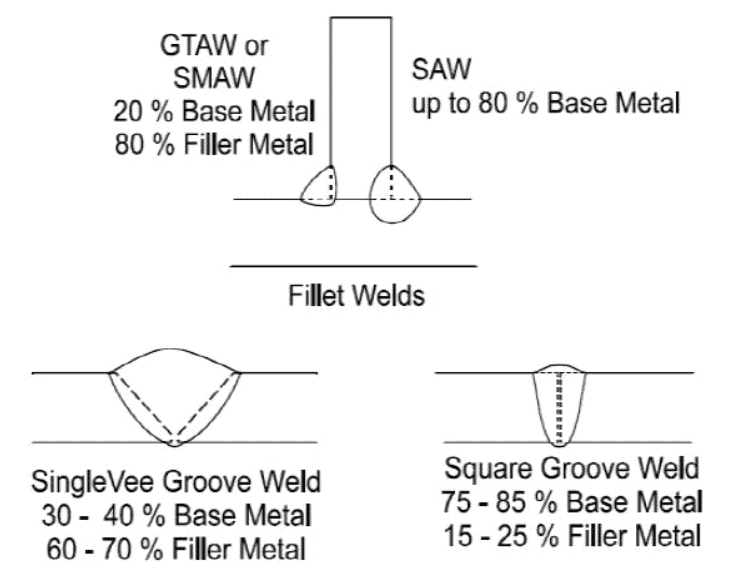
2. Heat Input (H.I.)
What is heat input in welding, its formula, online calculator, and unit – www.materialwelding.com
Heat input Calculator in (KJ/mm)= (Voltage X Current X 60)/(welding speed-mm/min X 1000)
Increasing the heat input will lead to higher thermal energy and hence a high dilution rate. This is especially important when joining dissimilar materials such as carbon steel to stainless steel. Where it is desirable to have the least dilution from carbon steel material.
- Autogenous welds–Without filler/ welding electrode; Joining titanium to titanium without filler.
- Homogeneous–Using matching welding consumables e.g. welding SS 347 using ER347 filler wire.
- Heterogeneous–Using dissimilar welding consumables e.g. welding carbon steel to SS316L using ER309LMo.
3. Thermal Cycle
When a material is welded the parent material immediately adjacent to the weld is subjected to the welding thermal cycle. This material is rapidly raised to a temperature just below its melting point and cooled almost as quickly due to the mass of cold metal.
his cooling rate depends on the mass, specific heat, the initial temperature of the parent metal, and the heat input of the welding process.
Microstructure Prediction
Once some indication of the composition of the weld pool has been established, the phase diagram for the alloy system involved can assist in determining the structure.
It must always be remembered that commercial alloys will have minor amounts of alloys other than the main ingredients and this will make the use of the diagram only approximate.
Schaeffler Diagram, Delong Diagram, and WRC diagrams are can be used for microstructure prediction in welding.
Example of the Dilution rate calculation
Let us understand, the dilution rate calculation using this simple example: The below example is for reference learning for dilution rate calculation purposes.
Here The base material is SS430 welded using ER308 considering a dilution rate of 35% dilution from the base material and a balance of 65% from filler wire.
| Carbon | Chrome | Nickel | Manganese | |
| Welding wire chemistry | 0.08 | 21 | 10.9 | 2.1 |
| SS430 chemistry | 0.091 | 18 | 0.6 | 0.59 |
| welding electrode dilution (65%) | 0.052 | 13.65 | 7.09 | 1.365 |
| Base material dilution (35%) | 0.032 | 6.3 | 0.21 | 0.21 |
| Weld Metal | 0.084 | 19.95 | 7.3 | 1.575 |
Dilution rate calculation Equation
The average percentage of a specific alloying element X in the diluted weld metal can be calculated using the following equation:
Xw = DaXa + DbXb + Xf (1 – Dt) (Reference AWS Handbook Volume 4)
where:
- Xw = Average % of element X in the weld metal, w;
- Xa = % of element X in base metal a;
- Xb = % of element X in base metal b;
- Xf = % of element X in filler metal f;
- Da = % dilution by base metal a, as a decimal;
- Db = % dilution by base metal b, as a decimal; and
- Dt = % total dilution by base metals a and b, as a decimal.
Dilution rate calculation in groove weld with filler and without filler
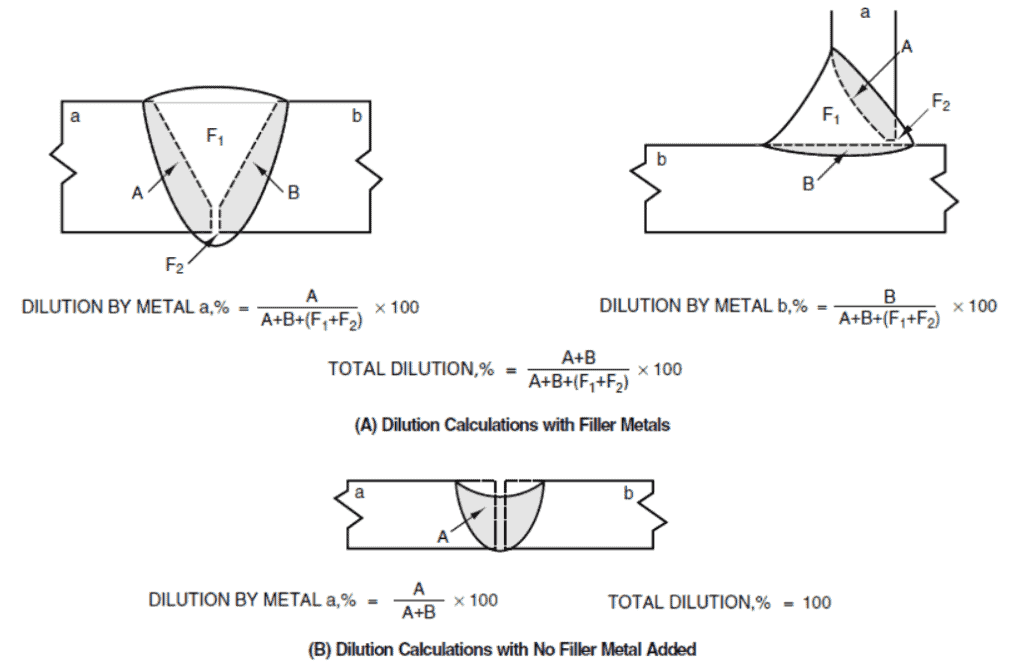
where,
a = Base metal
b = Base metal
A = Cross-sectional area of weld in base metal a
B = Cross-sectional area of weld in base metal b
D1 = % total dilution
Da = % dilution in base metal a
Db = % dilution in base metal b
F1 = Cross-sectional area of weld above base metal
F2 = Cross-sectional area of weld below base metal
Dilution rate in different welding processes
Typical values of dilution rates found in different welding processes are shown in the below table.
The values are for reference purposes only as different welding variables affect the rate of dilution in welding such as welding current, voltage, welding position, electrode diameter, electrode angle, shielding gases, etc. to name a few. In SMAW or stick welding dilution rate is within 25 to 40%.
